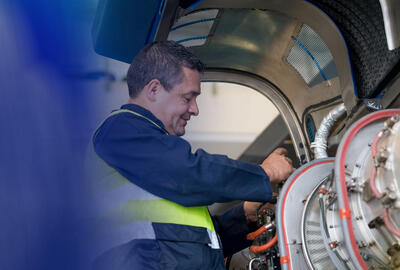Maintenance engineering is critical to many manufacturing businesses, because of the responsibilities that the jobs in this field entail. Maintaining equipment and machinery so that it runs continuously is the responsibility of maintenance engineers. The routine maintenance of equipment and machinery and the organisation of any repairs are under the purview of these professionals, who often utilise computerised systems to assist in this endeavour.
Processing and manufacturing industries require maintenance engineers to maintain and increase efficiency, as well as contribute to the development and progress of the sectors. In general, this role is vital to reducing costly incidences of equipment breakdowns, improving facility production capabilities, and even improving the processes that include the overall safety and reliability of the plant, production, and personnel. The best way to secure an interview for a job in maintenance engineering is by creating an effective CV. Let us share with you a few tips on how to do this.
Maintenance engineering CV writing tips.
-
A CV for jobs in maintenance engineering should include:
-
personal statement or profile
-
employment history
-
professional qualifications
-
relevant skills
It is important that the CV is specifically tailored to the company and the particular job that is being sought. It may help to research the company to understand the values, mission, and the most important goals and objectives of the organisation you’re applying to. With this information in hand, tailoring the CV to the job and company will demonstrate an understanding that other candidates may overlook.
Engineering jobs provide a great deal of satisfaction due to the great opportunities and challenges they involve. There is some really good training in this field; it can satisfy both the need to be creative and logical. Furthermore, maintenance engineering positions are well respected.
The salaries at entry level, according to Salary Track as for August 2018, are quite significant, with average maintenance engineering salary being £34,000, and typical salaries at the senior level or with experience ranging from £30,000 to £45,000 or more. Create an effective CV by following these few tips and download our construction CV template to get you on the right track.
Personal statement.
The personal statement (also known as a profile) should be unique to the company, as mentioned above. It is in this part of the CV where candidates can demonstrate their knowledge of the job in that they are interested in, and the company they wish to join.
The statement should be written in the third person. This means candidates need to avoid statements such as ‘I am an enthusiastic and highly motivated individual, and I have a clear understanding of the responsibilities and the role of a maintenance engineer’.
Instead, candidates should say something along the lines of ‘An enthusiastic and highly motivated individual who has a clear understanding of the role and responsibilities associated with being a maintenance engineer. Then continue with the personal statement by describing the particular roles and duties as associated with the specific job that is being offered.
Employment history.
This part of the CV should also be adapted to the specific job and company to which the candidate is applying. This you should include as much career or work history that is related to employment in maintenance engineering as possible. If the job requires experience of MIG welding and fabrication, assisting in the maintenance of plant and machinery, responding to breakdowns, then describe previous jobs which had similar duties, and in particular responsibilities and experience that will benefit the new company.
Professional qualifications and relevant skills.
As a maintenance engineer, there may be specific educational or other professional qualifications that are required by the new company. For instance, employers might list preferred qualification such as BTEC certificate in operations and maintenance engineering, or a specific bachelor engineering degree.
Thus, when tailoring the CV, it is crucial to research the company thoroughly and understand the parameters of the job completely. Depending upon the various qualifications and skills, candidates may need to break this part of the CV into two sections.
Applicants are also advised to be vocal about their leadership skills, technical and personal effectiveness, and the ability to come up with practical solutions to difficult problems. They should also remember to characterise themselves as being comfortable with and able to cope with change effectively.





